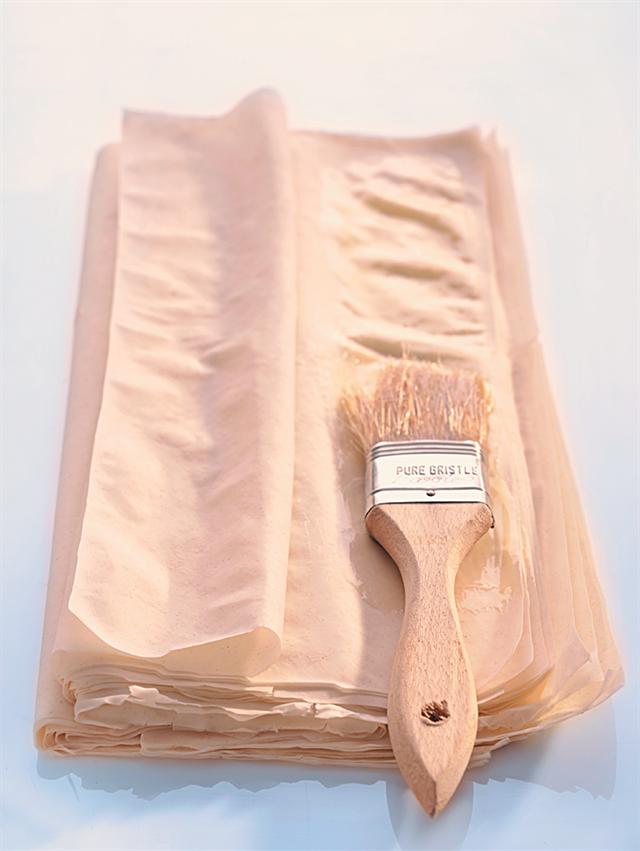All about phyllo pastry:
- Phyllo pastry is tissue-thin sheets of dough used predominantly in Greek and Middle Eastern pastries and pies. It is used in multiple layers of butter-coated pastry to create a flaky crust. The pastry is found in the frozen section at grocery stores and comes in large sheets rolled into a compact roll of about 30 sheets. _ It needs to stay covered and should be thawed in the fridge overnight or at room temperature for a few hours.
- The secret to using phyllo is to be organised and work quickly. Prepare all your ingredients before opening the phyllo pastry.
- When ready to start, remove the phyllo from its plastic casing and unroll the sheets. Keep the box as unused phyllo can be refrigerated or refrozen.
- Phyllo should always be covered with a damp cloth when not in use as it dries out very quickly. As you remove each sheet the rest must remain covered.
- The sheets can be cut into the size and shape required. I find it easiest to cut the pastry with a pair of scissors.
- Brush individual sheets with melted butter as dishes typically require more than one sheet. You can use oil-flavoured cooking spray between the layers instead of butter for a lowfat choice when making pies and pastries.
- Don’t worry if the pastry tears as this sheet can be used in the middle layer of the dish and will not be visible once cooked.
Uses for phyllo:
- Use phyllo sheets in place of pie and tart crusts.
- Cut with a sharp knife to make strips to place over pie fillings.
- Cut into squares, spoon filling into the centre and gather the corners to form little parcels.
- Cut to make bite-size starters or leave in large pieces to make strudel.
- Phyllo pastry can be prepared ahead of time and covered and refrigerated or frozen and baked just before serving. This method makes phyllo the flakiest.
- You can sprinkle ingredients between the layers of phyllo or on top before baking.
- Fillings should be cooled before spooning into the phyllo as hot or warm fillings will cause the pastry to wilt.
- Brush the edges of the pastry lightly with an egg wash to bake and seal the edges.
- Do not microwave phyllo pastries and pies as this will make them limp and soggy.
- Freeze baked and cooled phyllo shapes, wrapped in an airtight container, for up to a month or until ready to use. Place in a preheated oven of 180°C and reheat.
- Filled phyllo pastry can be frozen for up to one month, depending on the filling. Do not thaw filled phyllo pastry as it will become soggy. Rather place in a preheated oven from frozen.

Folding phyllo:
- Have all the ingredients for the recipe prepared.
- Unroll the number of sheets required.
- Roll out some wax paper and stack the sheets of phyllo you will be using on top.
- Cover the remaining sheets with a damp cloth.
- Work as quickly as you can. Spray or brush the sheets as you build the layers required.
- Place the filling close to the bottom of the pastry, fold the sides to encase the filling and then roll into a thick sausage shape. Brush butter on the outside and the dish is ready for baking.

The end result:
- Heat, humidity and some fillings may cause phyllo to become soggy.
- Serve baked pastries and pies warm or at room temperature.
- Generously dust baked sweet pastries with icing sugar.


